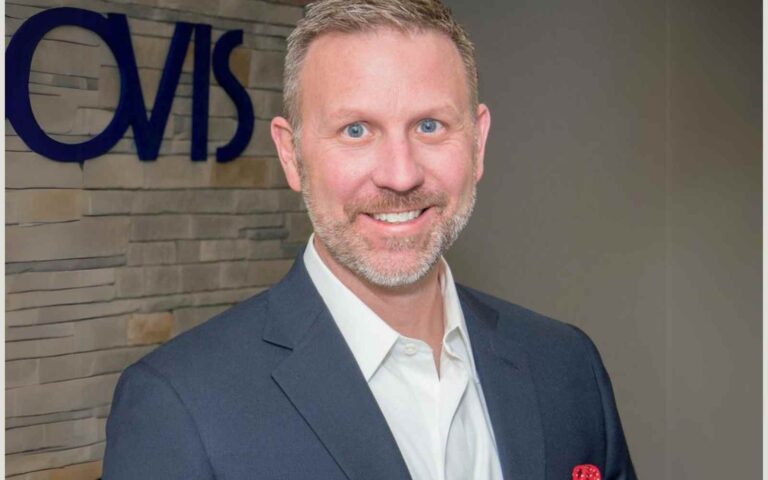HRM is at a key inflection point in its evolution, according to a majority of global HR executives interviewed for KPMG’s Future of HR 2020 study. But what is human resource management, and can it adapt to contemporary business dynamics?
Table of Contents
ToggleOne of the most striking findings from KPMG’s survey of 1,300 HR leaders from across the globe was that 3 in 5 believe that the HR function will rapidly become irrelevant unless it is completely reinvented for the modern age. This includes designing employee experiences that respond to evolving demands and utilizing technology to understand the needs and motivations of the workforce. Another study, this time from Gartner, found that a mere 9% of chief human resources officers (CHROs) were confident that their organizations were ready for a future of work characterized by an increasingly digital business environment.
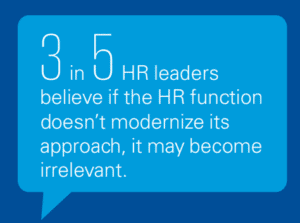
(Image source: KPMG)
What is Human Resource Management?
The earliest use of the term “human resource” traces back to a book by American economist John R. Commons – The Distribution of Wealth – published in 1893, though its modern interpretation is attributed to a 1958 report by sociologist/economist E. Wight Bakke. However, it wasn’t until the last few decades of the 20th century that the transactional nature of personnel management evolved into a more strategic organizational competence, now defined as human resource management.
But what is human resource management in this modern sense? Well, HRM refers to a broad collection of principles, policies, functions, strategies, and technologies that help organizations build competitive advantage by augmenting the value of their human capital.
The strategic objectives of human resource management can be classified under four distinct heads.
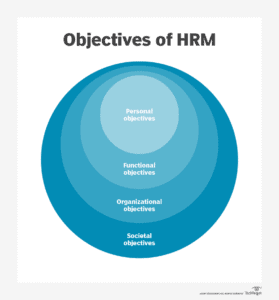
(Image source: TechTarget)
- Societal objectives: Human resource management is responsible for ensuring compliance with statutory obligations and legal mandates, such as health and safety, equal opportunity, and equal pay, as well as fulfilling the ethical and social responsibilities of a business and its workforce.
- Organizational objectives: HRM is tasked with ensuring that an organization’s human capital is aligned with the long-term productivity and performance goals of the business.
- Functional objectives: HRM oversees all transactional, administrative, and strategic aspects of workforce management to ensure the efficiency and effectiveness of the HR function.
- Personal objectives: Human resource management will nurture and support the personal growth and career development goals of every employee.
Ok, so we understand what HRM is for – but what is human resource management in practice? As we shall see in the next section, HRM combines a broad and diverse selection of specialized functions, skills, and responsibilities to achieve these high-level objectives.
Key Functions of Human Resource Management
As the mandate for HRM expands, so does the list of functions and activities associated with the practice. Here are some of the core functions of human resource management – relevant to every business, regardless of size or industry.
Policy Formulation
Many organizations still view HR as an operational rather than a strategic function – as implementers rather than formulators of policy. However, calls for HR to be included into the C-suite and at the policy-making table have been increasing in recent years.
In fact, way back in 2015, an HBR article advocated the creation of a core group comprising the CEO, CFO, and CHRO to elevate the HR function from being a “supporting player brought in to implement decisions that have already been made” to a “central part in corporate decision-making.”
More recently, Julia Modise, a Consultant in Spencer Stuart’s Industrial and Human Resources Practices, wrote that “The profile of a CHRO has shifted from a traditional HR professional narrowly focused on his/her function to a well-rounded business leader who can contribute meaningfully in all areas of the business. Today’s CHRO is a culture carrier and change agent who is commercially astute, analytical, and technologically savvy, who speaks truth to power and influences softly yet assertively.”
Human Resource Planning
Finding and retaining talent is simultaneously a core HR function, as well as the biggest HR challenge. In today’s climate of talent scarcity, the inability of HR to find the right talent can severely hamstring the business. At the same time, hiring the wrong candidates can end up costing a company as much as £17,000 (~US$20,000), according to one study.

(Image source: Smartsheet)
Human resource planning is the process that enables businesses to avoid both these eventualities by forecasting the demand for talent, anticipating and developing the most valuable skills, and ensuring that the business is optimally staffed for the best results. It also enables better succession planning by creating a pipeline of talent that is ready for leadership roles. Finally, human resource planning helps align human capital management more closely with business strategy over the long-term.
Recruiting, Hiring and Onboarding
This function of human resource management covers everything from identifying talent gaps in the company to defining the criteria and the candidates that best suit the role, attracting those candidates and interviewing them, selecting the right ones, and then hiring/onboarding them.
Even though this may seem to be a fairly linear exercise, there are multiple variables at each stage that have to be carefully considered. For instance, should the focus be on internal recruitment – which can be a massive time-saver – or on external recruitment to bring in new perspectives and ideas? Can the process be handled in-house, or is there a need for specialist recruitment consultants with easier access to the talent profiles the company is looking for?
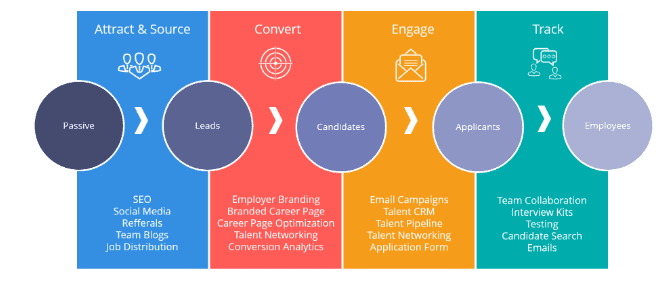
(Image source: Atrivity)
Onboarding is also a vital part of the process as it can dramatically impact employee engagement, performance, and longevity.
Compensation and Benefits Management
Given the mad scramble for a dwindling talent pool, there is no underestimating the role of compensation and benefits in attracting and retaining the right talent. However, it’s not just about outbidding the competition. The focus of human resource management has to be on delivering a compelling proposition that addresses the question of long-term value for both the candidate and the company. Every offer has to be benchmarked to industry standards and there should be adequate consideration given to reevaluating the package based on predefined performance milestones.
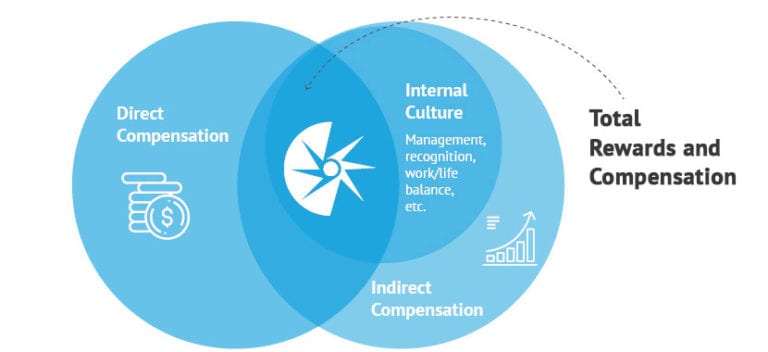
(Image source: Academy to Innovate HR (AIHR))
Today, factors like company mission and culture eclipse salary and benefits as key drivers of employee satisfaction. More and more companies are now expanding their compensation and benefits programs to include social benefits – such as maternity and paternity leave, severance pay, etc. – and indirect compensation benefits, like paid time off and flexible hours.
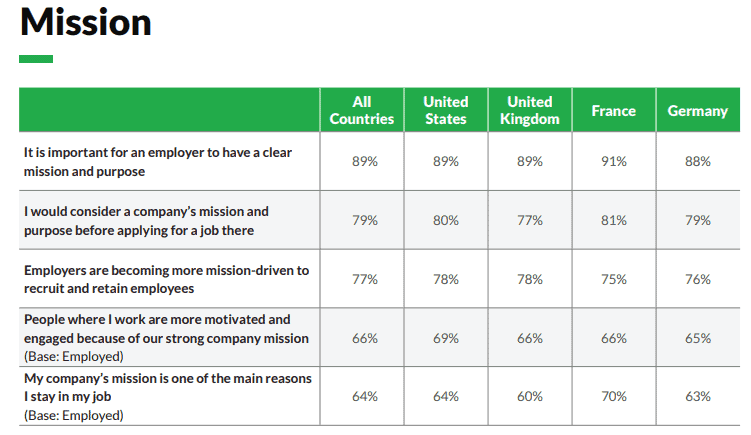
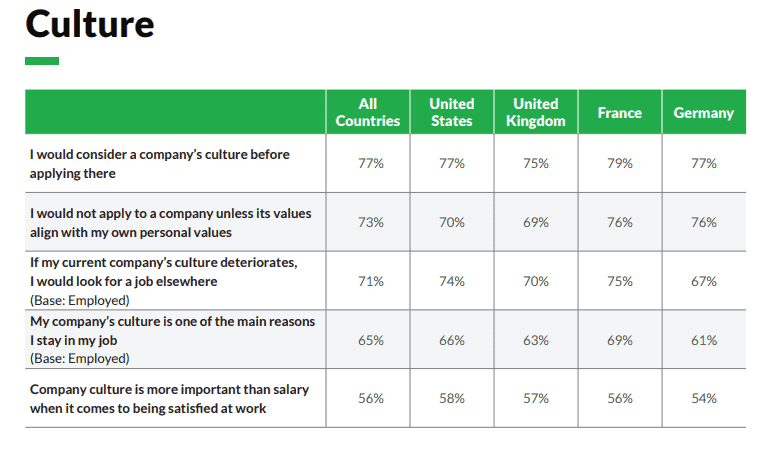
(Source: Mission & Culture Survey 2019. Glassdoor.com)
Learning and Development
Strategic learning and development is a critical human resource management function that can help both nurture in-house talent and create career development opportunities that can attract new talent. The goal of HRM should be to create a continuous learning culture that is driven from the top and extended across the workforce to enhance employee skills and capabilities on an ongoing basis.
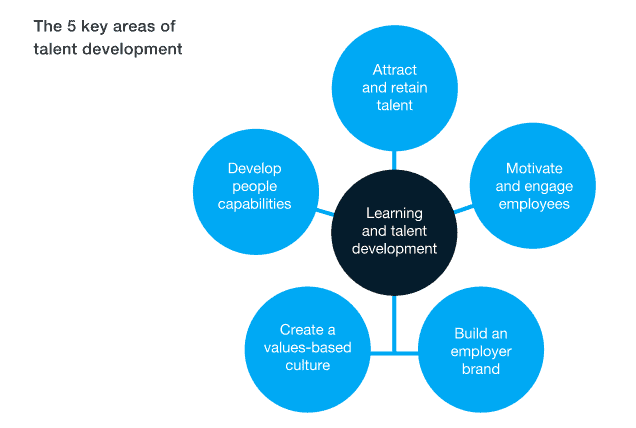
(Image source: McKinsey)
A focused L&D strategy delivers benefits that extend beyond attracting/retaining talent though. For instance, helping employees develop new competencies can boost engagement as well as satisfaction. It can also help create a values-driven culture and enhance a company’s reputation and brand.
Performance Management
Performance management is another strategic HRM function that aligns individual goals with group and organizational goals. Unlike performance appraisals, where the focus is entirely on individual employees, performance management assesses an employee’s capabilities and contributions against the more strategic context of organization objectives.

(Image source: Academy to Innovate HR (AIHR))
Effective performance management emphasizes the continuous development of employee skills and capabilities alongside the changing needs of the business. It promotes productivity engagement by providing employees with the opportunity to manage their own career trajectory through acquiring new skills. By combining continuous development, feedback, recognition, and growth, performance management can have a significant impact on employee engagement too.
Employee Relations
The employee relations function focuses on creating and maintaining a positive and productive relationship between a company and its workforce – and between members of the workforce itself. As opposed to earlier approaches to labor relations, employee relations views employees as stakeholders, seeks and values their feedback, and factors this feedback in when making decisions that could impact the employee experience.
Employee relations managers act as the liaison figure between management and workers, and typically fulfill two broad mandates. The first is to prevent and resolve conflicts or disputes between employees and management over compensation, working conditions, etc. The second is to understand employee needs and expectations that can be useful in policy formulation.
Other Functions
Apart from these seven core functions, human resource management covers a variety of other equally critical activities, such as promoting the health and safety of workers, ensuring compliance with labor and employment laws, building corporate image, etc. – as well, of course, as a whole range of administrative functions.
The Future of Human Resource Management

Earlier in this article, we referenced two studies that revealed some rather gloomy prospects for the future of human resource management. On the bright side, however, both studies also highlight some key recommendations and priorities for HR leaders to address in order to refocus HRM for the modern age.
HR Leaders’ Top 2020 Priorities, According to Gartner
- Build Critical Skills and Competencies
As technology transforms the enterprise through automation and digitalization, the capabilities required to succeed in this new normal are changing at too rapid a pace for conventional talent development strategies to cope with.
HR leaders have to adopt a market-driven predictive approach to identifying the competencies critical to business success. The HR function will also have to work closely with business leaders to ensure a balanced portfolio of digital, conventional, and legacy skills. In addition, the global dearth of talent means that human resource management will have to address at least some of the scarcity through in-house talent development.
- Strengthen the Leadership Bench
As with the previous point, conventional succession planning strategies do not measure up to the uncertainty and accelerated change of the digital age. Meanwhile, leadership profiles are being radically redefined, even as concerns persist around issues such as diversity.
HR leaders will have to explore innovative strategies like Complementary Leadership to accelerate leadership development. Partnering prospective leaders with complementary skill sets can help organizations deal with some of the challenges of succession planning.
- Implement Organizational Design and Change Management
This is a priority that many HR leaders are either unequipped to handle or unsure about addressing effectively. Adding to this general mood of ambivalence is the increasing lack of alignment between organizational structures and workflows/networks caused by the evolution of operating models.
One of the ways human resource management can address these challenges is by shifting away from a top-down approach to involving employees as co-creators in change planning and decision-making.
Four Interconnected Focus Areas for HR, According to KPMG
KPMG’s Future of HR 2020 survey identified a number of organizations that were excelling at their HR function. KPMG calls them “Pathfinding HR organizations,” and they represented roughly 10% of the survey sample. “This confident group of HR executives,” explains KPMG, “are simultaneously focusing on four discrete capabilities to chart their course to the future in a disrupted world: shaping the workforce of the future, nurturing a purpose-driven culture, designing a ‘consumer-grade’ employee experience, and all through the use of evidence-based insights.”
- Shaping the Workforce
Workforce shaping refers to the strategic priority for identifying future workforce composition – along the lines of who to buy, build, borrow, or bot – to account for the impact of artificial intelligence (AI) and other related technologies on the workforce. Though a clear majority (76%) of Pathfinding HR organizations are prioritizing this exercise, there still seems to be quite a bit of uncertainty about the execution.
Organizations that have been successful in this area are significantly invested in creating workforce shaping roles and have considerable support from the C-suite. As a process, workforce shaping precedes workforce planning, helping to create a context for action by defining multiple potential future business scenarios and then reverse engineering possible workforce compositions. No matter the variations of the final composition, the fact is that most HR organizations will have to undertake extensive upskilling to equip their workforce with the capabilities required for success in the future.
- Creating a Purpose-Led Culture
Aligning organizational culture with an organization’s purpose is currently on the HR agenda for over 60% of businesses in the KPMG survey. And while businesses will spearhead the cultural change they want to see, it will fall to HR to ensure that it sticks. Here again, there are twice as many HR executives who believe in their leadership’s commitment to an innovative culture as there are executives that think that there will be adequate follow-through.
Designing and driving successful cultural transformation has to begin with an assessment of the current culture state and a clear understanding of the business objectives that the new culture is expected to enable. Management and HR leaders then have to bring together the right team, with dedicated culture change roles, in order to get the exercise off the blocks. Finally, HR has to activate and orchestrate the levers of influence at its disposal to ensure sweeping and sustainable cultural change.
- Designing the Employee Experience
Employee experience design is currently a top-three priority for most HR executives. More and more HR organizations are turning to new capabilities like design thinking to create a frictionless, connected employee experience (EX).
In a marketplace characterized by a severe scarcity of specialized skills, employee experience may well be the key to attract the right kind of talent. But to succeed with this strategy, HR organizations need to have a structured approach to EX design that extends beyond just a digital experience to account for environmental, social, and leadership factors.
- Deriving Workforce Insights from Data
Advanced analytics capabilities are a key driver for most technology investments within HR organizations. However, these technology investments will have to be backed by investments into developing dedicated analytics resources and capabilities within the HR function. A data-driven approach to building workforce insights will enable HR organizations to more comprehensively address key business issues related to capability, productivity, and performance.
Technology and related resources alone, however, may not help HR address all its current challenges. There has to be a concerted effort within HR to deploy concepts such as evidence-based decision-making and insights-driven storytelling to expand the scope for identifying new opportunities and addressing current challenges.
Final Thoughts
Human resource management is currently in a state of flux as a result of business uncertainty, digital disruption, and shifting workforce dynamics. Even as technology transforms almost every key function of HRM, emerging concepts like employee wellbeing and employee experience are opening up new opportunities for the continued evolution of the practice. The skill sets and capabilities required of HR practitioners is also expanding to include more technical competencies and more sophisticated soft skills. Human resource management continues to evolve to keep pace with all these developments. And as human capital emerges as a critical source of competitive advantage, on par with technology and brand positioning, HRM has a vital role to play in ensuring that the capital is nurtured and aligned with delivering optimal business outcomes.
Summary:
What Is Human Resource Management?
The earliest use of the term “human resource” traces back to a book by American economist John R. Commons – The Distribution of Wealth – published in 1893, though its modern interpretation is attributed to a 1958 report by sociologist/economist E. Wight Bakke. However, it wasn’t until the last few decades of the 20th century that the transactional nature of personnel management evolved into a more strategic organizational competence, now defined as human resource management. But what is human resource management in this modern sense? Well, HRM refers to a broad collection of principles, policies, functions, strategies, and technologies that help organizations build competitive advantage by augmenting the value of their human capital. The strategic objectives of human resource management can be classified under four distinct heads. Societal objectives. Organizational objectives. Functional objectives. Personal objectives. HRM combines a broad and diverse selection of specialized functions, skills, and responsibilities to achieve these high-level objectives. Policy Formulation. Human Resource Planning. Recruiting, Hiring and Onboarding. Compensation and Benefits Management. Learning and Development. Performance Management. Employee Relations.


